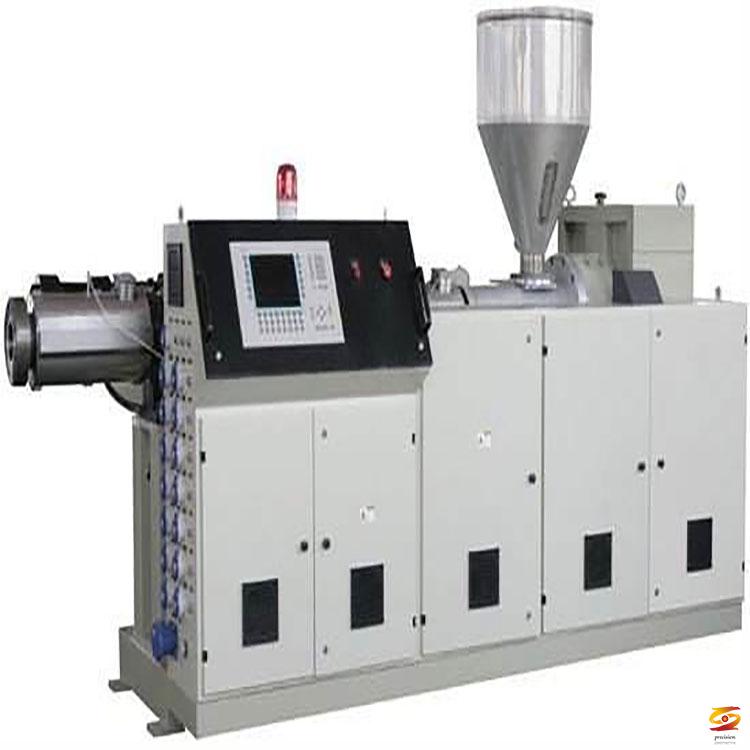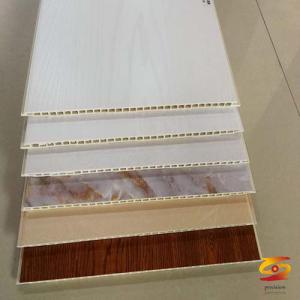The screw parameters of the extruder are summarized, please take it away!
The screw parameters of the extruder are summarized, please take it away!Several important geometric parameters of screw
1. Screw diameter (D)
a. Related to the required injection volume:
Injection volume=1/4*π*D2*S (injection stroke)*0.85;
b. Generally speaking, the screw diameter D is inversely proportional to the highest injection pressure and directly proportional to the plasticizing ability.
2. Conveying section
a. Responsible for the transportation, pushing and preheating of plastics, preheating to the melting point should be guaranteed;
b. Crystalline plastics should be long (eg POM, PA) followed by amorphous materials (eg PS, PU, ABS), with the shortest thermal sensitivity (eg PVC).
3. Compression section
a. Responsible for the mixing, compression and pressurized exhaust of plastics. The raw materials through this section have been almost completely melted, but they may not be evenly mixed;
b. In this area, the plastic gradually melts, and the volume of the screw groove must be reduced accordingly to correspond to the decrease in the geometric volume of the plastic, otherwise the material pressure is not solid, the heat transfer is slow, and the exhaust is poor;
c. It generally accounts for more than 25% of the working length of the screw, but the compression section of the nylon (crystalline material) screw accounts for about 15% of the working length of the screw. Plastic screws such as high viscosity, fire resistance, low conductivity, and high additives account for 40%. -50% screw working length, PVC screw can account for 100% screw working length, so as not to generate intense shear heat.
4. Metering section
a. It generally accounts for 20-25% of the working length of the screw to ensure that all plastics are melted and the temperature is uniform and the mixing is uniform;
b. If the metering section is long, the mixing effect is good; if it is too long, the melt will stay too long and thermal decomposition will occur; if it is too short, the temperature will be uneven;
c. PVC and other heat-sensitive plastics should not stay for too long to avoid thermal decomposition. Shorter or non-measured sections can be used.
5. Feeding screw groove depth, measuring screw groove depth
a. The deeper the depth of the feed screw groove, the greater the conveying volume, but the screw strength needs to be considered. The shallower the metering screw groove, the higher the plasticizing heat and mixing performance index, but the shallower the metering screw depth, the shear Increased heat, increased self-generated heat, and too high temperature rise, causing plastic discoloration or scorching, especially not conducive to heat-sensitive plastics;
b. Depth of measuring screw groove=KD=(0.03-0.07)*D, when D increases, K selects a small value.
two
The main factors affecting the plasticizing quality
The main factors affecting the plasticizing quality are: aspect ratio, compression ratio, back pressure, screw speed, barrel heating temperature, etc.
1. L/D ratio: the ratio of the effective working length of the screw to the screw diameter.
a. If the length-to-diameter ratio is large, the food is easy to be uniform;
b. For plastics with better thermal stability, a longer screw can be used to improve mixing without scorching. For plastics with poor thermal stability, a shorter screw or no screw thread at the end of the screw can be used. Considering the characteristics of plastics, the general flow rate is as follows: thermosetting 14-16, rigid PVC, high viscosity PU and other heat sensitivity 17-18, general plastic 18-22, high temperature stable plastics such as PC and POM 22-24 .
2. Compression ratio: it is the ratio of the depth of the last screw groove of the feeding section to the depth of the first screw groove of the measuring section.
a. Taking into account the impact of the material's compressibility, filling degree, backflow, etc., the product should be compact, heat transfer and exhaust;
b. Appropriate compression ratio can increase the density of the plastic, make the molecules more tightly bonded, help reduce the air absorption, reduce the temperature rise due to pressure, and affect the difference in output. Inappropriate compression Than will destroy the physical properties of plastic;
c. The higher the compression ratio, the higher the temperature rise of the plastic during the plasticizing process in the material tube, and the better the uniformity of the mixing of the plastic during plasticization. The relative output is greatly reduced;
d. High compression ratio is suitable for non-fusible plastics, especially with low melt viscosity and thermally stable plastics; low compression ratio is suitable for fusible plastics, especially with high melt viscosity and heat-sensitive plastics.
3. Back pressure
a. Increasing the back pressure can increase the work done by the screw on the molten resin, eliminate the unmelted plastic particles, and increase the density and uniformity of the raw materials in the feed tube;
b. The back pressure is used to increase the temperature of the barrel, and its effect is most significant;
c. If the back pressure is too large, it may decompose easily to the plastics with high thermal sensitivity, and it may cause salivation to the low-viscosity plastics. If the back pressure is too small, the finished product may have bubbles.
4. Screw speed
a. The rotation speed of the screw directly affects the shear of the plastic in the spiral groove;
b. The small screw groove is shallower and absorbs heat quickly, which is enough to cause the plastic to soften during the compression period. The frictional heat energy between the screw and the barrel wall is low, suitable for high-speed rotation and increasing the plasticizing capacity;
c. Large screw should not be rotated quickly to avoid uneven plasticization and excessive friction heat;
d. For plastics with high thermal sensitivity, if the screw speed is too large, the plastic will be easily decomposed;
e. Generally, the screw of various sizes has a certain speed range, generally 100-150rpm; too low to melt the plastic, too high to scorch the plastic.
5. Electric heating temperature setting
a. Melt the cold and hard plastic staying in the barrel and screw to facilitate the rotation of the screw and provide part of the heat required for the plastic to obtain the melting;
b. Set 5-10℃ lower than the melt temperature (partly provided by frictional heat energy);
c. The temperature adjustment of the injection nozzle can also be used to control the problems of drooling, condensate (plug nozzle), wire drawing, etc.;
d. General temperature control of crystalline plastics.
If you want to know more about it please do not hesitate to
contact me. WhatsApp:+86-15966835076.








